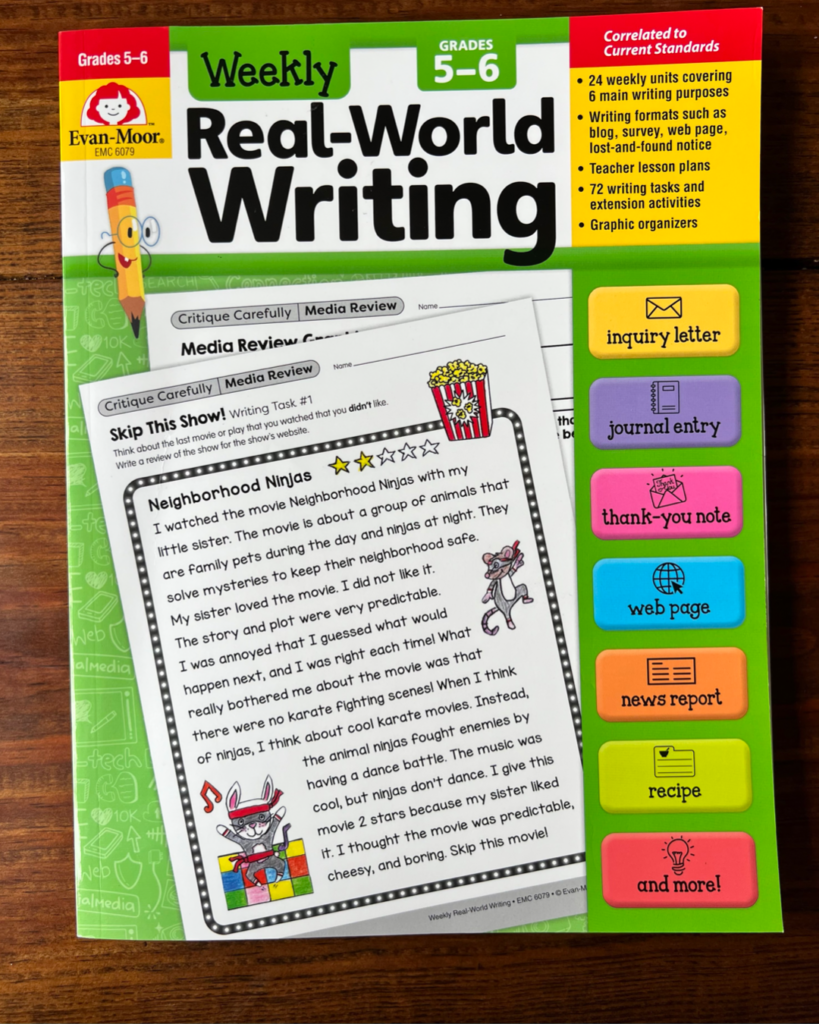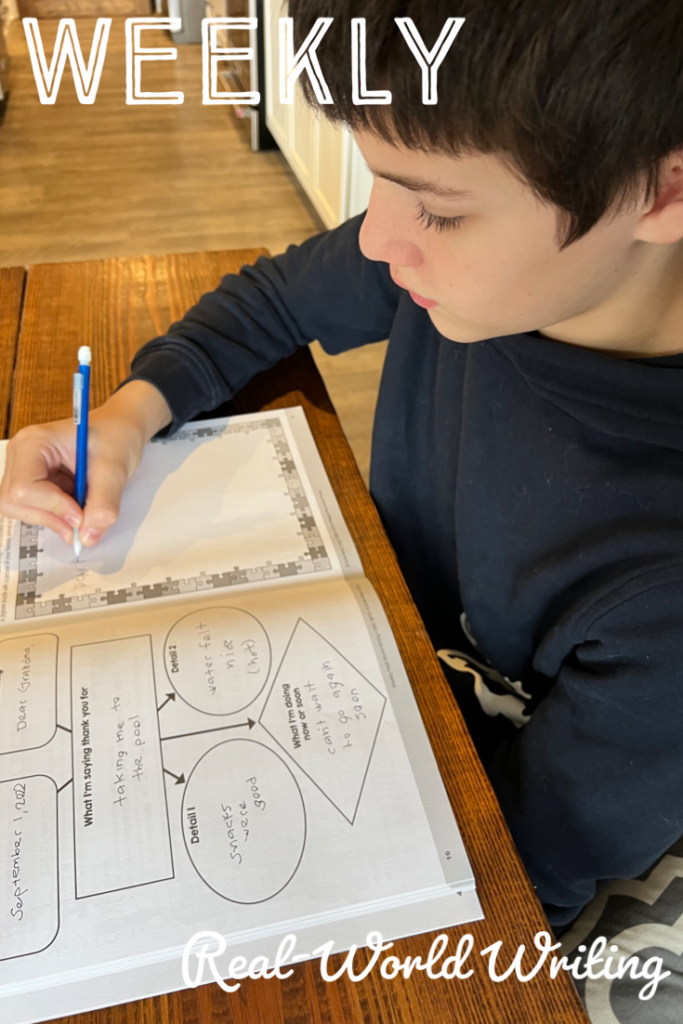I was provided a copy of this product for review purposes. As always, all opinions are my own.
In my experience, getting kids of any age to engage in writing can be a challenge. First there is the inability to read and spell that puts a damper on things. This was the stage that I’d have my kids narrate their ideas, and I’d write down verbatim what they said as their “story”.
Then comes the issue of constant writer’s block. Think…”I don’t know what to write about” on repeat.
Finally, you try to provide a prompt or a starter and you’re met with “I don’t want to write about that.” Am I right?
Enter a new way to think about writing.
Weekly Real-World Writing by Evan Moor for grades 5-6 available at Timberdoodle individually or as part of the 5th Grade Curriculum Kit.

We write for a multitude of reasons. Most certainly as adults we don’t sit around thinking of persuasive essays and poems on the daily. Don’t get me wrong, writing is a wonderful and creative way to get your thoughts out there and express your feelings, but for the most part, unless you’re an actual author of some sort, you’re not sitting around and writing daily.
You would, however, be more likely to write out a recipe, create a pro/con list for a large purchase you’re contemplating, or write a thank-you note to a friend for a gift they sent you for your birthday. Those are real-world scenarios when writing is necessary and needed. Being able to complete real-world writing is vital, and many times overlooked by teachers because they’re concerned about those classic 5 paragraph informative essays with a thesis statement and transition words and sentence variety, all about the life of a dolphin.
(Nothing against dolphins. They’re lovely.)
This is where Weekly Real-World Writing by Evan Moor has become a weekly part of my homeschool. We have been focusing on one real-world writing format each week. So far this year, we’ve learned about journal entries, thank-you notes, blog writing, lost and found flyers, recipe cards, and news reports. It’s different. It’s engaging. It’s a life skill.
Each week includes writing samples to model a new skill, writing tasks to practice each format, and prompts to relate the writing to students’ lives. This workbook does a great job of making writing personal to each child.

It also provides enough of a variety that his writing lessons don’t feel like “lessons” if that makes sense. He’s tackling some real-world topic or scenario on a daily basis. Even the concept of learning to write out a grocery list or a to-do list for your day is a basic, real-world, needed skill.
Blog writing has especially interested my 6th grader as he’s beginning to develop a desire to create his own blog and youtube channel sharing his love of jiu jitsu, legos, and video games. Instead of having a mom that constantly complains about video games and screen time, I encourage him to use those enjoyable-to-him hobbies in his writing.
Are there times I wish he wouldn’t play the games so much?
Sure.
But gone are the days where parents can say, “you can’t make a career out of social media or youtube or blog writing or creating an online merchandise shop or playing video games.”
Because you can and people are…successfully.
It’s just like math teachers telling us we wouldn’t always have a calculator on us to solve equations…thanks iPhone.
As with most subjects in our homeschool, I’ve had to adapt to the constantly changing technology and interests that lead into future careers. Embracing these real-world writing projects has developed into a wonderful, engaging, and enjoyable homeschool “curriculum” that doesn’t feel like a curriculum at all. And I’m here for it.
I encourage you to take a look at Weekly Real-World Writing sold individually here and as part of the 5th grade curriculum kit here. This workbook provides vital learning for being a part of the real-world!


Leave a Reply